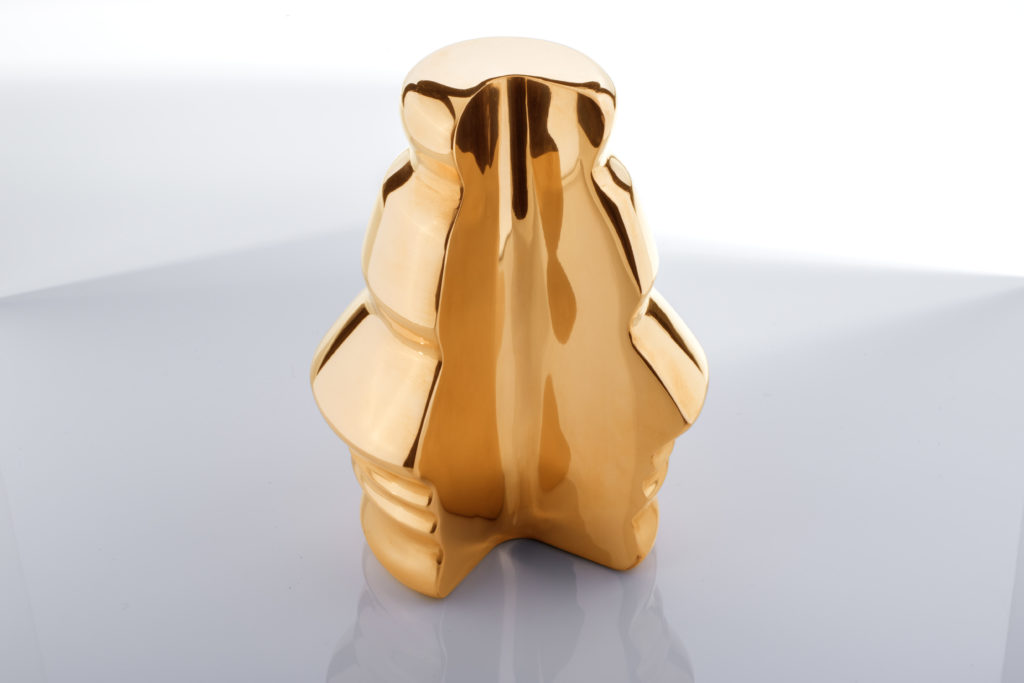Houska Prize Trophy
When it came to the design of the Houska Prize trophy, its creator, the Upper Austrian artist Michaela Schupfer, turned to movie actress and inventor Hedy Lamarr (1914-2000) for inspiration. In addition to her successful acting career and status as a Hollywood diva and style icon, Hedy Lamarr was also an exceptionally talented researcher and inventor.

Hedy Lamarr was born Hedwig Kiesler in Vienna in 1914 as the daughter of a Jewish bank director and a concert pianist. She discovered her love of acting early on, filming her first movie at the tender age of 16. In 1937 she fled to London to escape the Nazis and her controlling husband, who was an arms manufacturer. There, she was discovered and recruited by Metro-Goldwyn-Mayer. After she emigrated to the USA, MGM marketed her as The Most Beautiful Girl in the World and Hedy Lamarr soon became a glamorous Hollywood diva and style icon. Her greatest on-screen success was the 1949 silverscreen classic Samson and Delilah. In 1960 Hedy Lamarr’s star was added to the Hollywood Walk of Fame.
But the actress also left an enduring legacy as a researcher and inventor: in 1940 she met the composer George Antheil who created a piece in the 1920s that was played by 16 fully-automated, synchronised pianos. Like Lamarr, Antheil was a fervent opponent of National Socialism. During one of their numerous meetings they discussed the problem of enemy fighters disabling radio-controlled torpedoes by jamming specific frequencies. Hedy Lamarr’s knowledge of weapons systems and the experience gained by George Antheil when composing his fully automated piece of music helped them to arrive at a revolutionary idea: if the torpedo constantly switched frequency, it would no longer be possible for the signal to be jammed. However, the change in frequency would have to be synchronised exactly. After numerous experiments, the pair patented their frequency hopping device in 1942. Tragically, Hedy Lamarr would not live to see the fruits of her research work as it was not until many years later that her invention lived up to its full potential: her frequency-hopping spread spectrum technique is now incorporated into Bluetooth and GSM technology, and is found in every smartphone and navigation system.
The Day of the Inventors is held in honour of Hedy Lamarr in Austria, Germany and Switzerland on 9 November, which was her birthday.
Hedy Lamarr had a somewhat turbulent private life and made her last movie in 1958. She spent the final years of her life in Florida out of the public gaze. After her death in 2000, her ashes were scattered in the Vienna Woods.
Sources:
http://www.spiegel.de/einestages/filmdiva-hedy-lamarr-sexbombe-in-geheimer-mission-a-947288.html
http://de.wikipedia.org/wiki/Hedy_Lamarr
29.03.2020